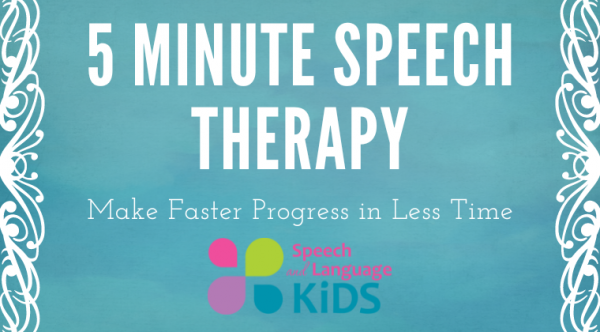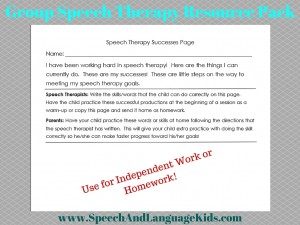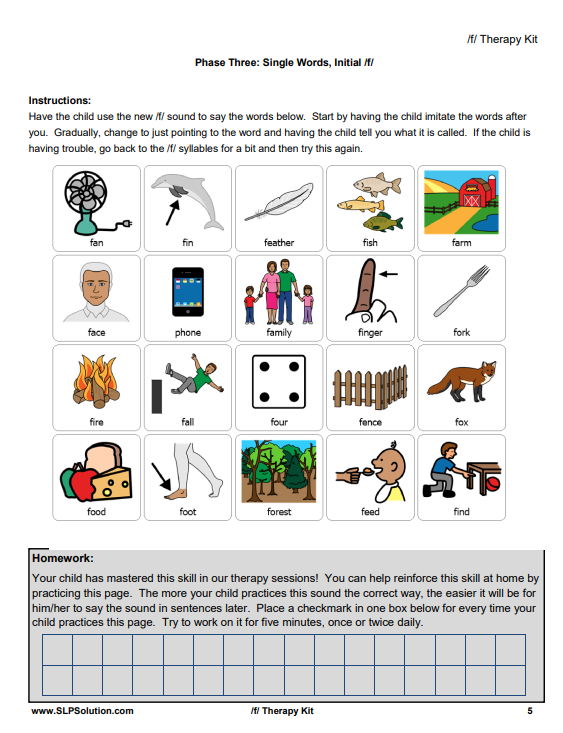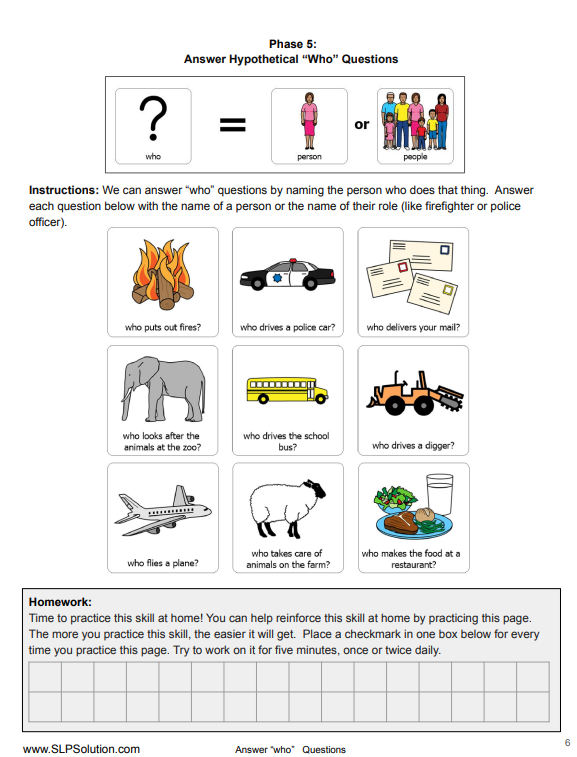Group Speech Therapy Activities (That Even Work When Everyone’s Working on Different Things)
There are many benefits to group speech therapy and we’ll be talking more about that in next week’s podcast episode. But what do you do when you end up with a group of kids who are all working on different things? It can still be very beneficial to have them working side-by-side and supporting each other, but it can be hard when they all need to focus on something different.
Today I’ll show you some tips that will help you do group speech therapy with a group of children that all have diverse needs and who are working on different skills.
The Four Approaches to Effective Group Speech Therapy:
In my experience, there are 4 main models that work well for doing group therapy:
- Lesson and Practice Approach
- Stations Approach
- One Activity, Multiple Skills Approach
- The Un-Group Approach
Let’s look at how each of these models work and which are best for groups of students with diverse needs.
Group Speech Therapy Approach 1:
Lesson and Practice Approach
This approach is good for social skills, language skills, fluency, and voice. In this model, you’ll present a new (or old) skill in a lesson where you discuss and the children listen. You will include demonstrations and then have children pair off and practice (role play or ask each other questions). For data collection, you will go between pairs and take data during their practice.
This approach is best used when the children are all working on the same skill or at least on very similar skills. For example, one child may be working on topic maintenance while the other student is working on asking questions to maintain a conversation. They’re both working on perpetuating a conversation so the demonstrations and practice are going to be very similar.
Conclusion: This model is NOT ideal for groups of children with diverse needs.
Group Speech Therapy Approach 2:
Stations Approach
This approach is good for speech sounds, groups where all are students are doing different things, and for independent workers. Each child has a page of work that they can do independently (word lists, grammar activity, etc.). Each child will work independently at a station for X minutes using their independent work page, then rotate stations (fine motor, gross motor, writing, yoga, SLP stations). The SLP station is where you work one-on-one on the next level of the skill. The speech therapist will collect data on the first 10-20 reps at the SLP station. If the student is able to do the next level up, the speech therapist will then give them a new sheet with that new skill being the independent work.
Conclusion: This model is GREAT for use in groups of children with diverse needs but the children need to be able to work somewhat independently.
How it Looks:
- Students walk in and find their folder from a bin or basket. They bring their folder to the table and pull out their independent work pages. These could be lists of words that use the target skill that they can read independently (or identify pictures of), sentences that contain a target sound or language skill (or pictures to describe with sentences), etc. I use a page like this below:
- The therapist introduces the stations for the day and assigns each child to one station. The SLP station is where the speech therapist sits and there is always one child at that station. Students go to each station and practice their independent work list while completing the activity at their station. When finished, they repeat until the timer goes off.
Station Ideas for Group Speech Therapy Activities:
- Speech Therapist Station: This is where the speech therapist sits. One child will be at this station at all times. The speech therapist will practice the next highest skill with the child (one step more difficult than what he can do independently), collect data, and determine if the student is ready to have the next highest skill for independent work.
- Fine Motor Station: Student repeats his words/sentences/skills while stacking small blocks as high as possible or assembling a toy that requires fine motor skills. When the structure is completed, the student disassembles and starts again.
- Gross Motor Station: Various gross motor skills (like standing on one foot, jumping up and down, touching one’s toes, etc.) are written on Popsicle sticks and placed in a cup. The student pulls a stick and practices all of his words/sentences/skills while doing that gross motor skill. Once he completes the list, he picks a new stick and starts over.
- Yoga Station: Pictures of children holding certain yoga poses are glued to cards and placed in a small tub. The student pulls one card and holds that yoga pose while saying his words/sentences/skills. When he finishes, he picks a new yoga pose and starts over.
- Writing: If the child is able to write, he writes his words/sentences/skills on a dry erase board while saying them out loud. If he is unable to write, various lines and shapes are drawn on paper and placed inside sheet protectors. The child uses a dry-erase marker to trace the lines or shapes while repeating his words/sentences/skills out loud.
- Sensory Station: The student is given a medium that allows for sensory exploration, such as slime, Gak, Play-Dough, or a tub of rice. The student is asked to squish, squeeze, and run his hands through the sensory medium while saying his words/sentences/skills out loud.
- When a timer goes off, students rotate to the next station and engage in the next activity while using their same word list.
- At the end of the session, students return their pages to their folders and put their folders away. Photo copies of their independent work sheets are sent home as homework until the next session.
Group Speech Therapy Approach 3:
One Activity, Multiple Skills Approach
This approach is good for children who are not yet working independently or for use with books or games. In this approach, everyone does the same activity (book reading or game) and each child waits until it is his turn to answer a question or practice his skill. The speech therapist will ask a different question for each child based on what he’s working on. The therapist will take data on one student per session or take data on all students once per month.
Conclusion: This approach is GREAT for students who are all working on different skills, although they won’t get in as much practice as in other models (stations or individual therapy).
How to Use Books in Group Speech Therapy Activities:
What Books to Choose?
Use the books that they are working on in class. This saves you time trying to find books and will help them generalize more quickly. Ask teachers for the most recent books.
How to Work on Speech Skills:
- Give each child a note card that has their target sound on it. Instruct them that when they hear a word that starts with their sound, they should raise their card. Help remind them the first few times until they get better at this.
- After you read each page (or each paragraph if it’s a longer book), have the student practice any of the words that contained their target sound (or just a few words if there were a lot). If the child is working at the sentence level, have him practice the whole sentence.
- If the child is able to write, have him write the words found on the back of his card while you’re working with the language kids.
- If the child is working at the conversational level, have him answer questions about the book using his good sound. If he has an error, help him catch it and fix it in his response.
How to Work on Language Skills:
- If you are working on specific grammar skills, use the same system as the speech skills where the child is listening for their grammatical structure and raises a card when it’s heard. After each page, have the child practice the sentences that used that grammatical marker and come up with additional sentences, as well.
- If you are working on answering questions, have the child answer questions about what’s going on in the story after each page.
- If the child is working on vocabulary, ask the child to define words in the text or give you synonyms and antonyms for key words.
- If the child is working on following directions, have the student follow directions like “point to the bus after you point to the frog”.
Best Group Speech Therapy Activities:
- Play-Dough
- Use cookie cutters to talk about vocabulary or build something and have the child guess what it is.
- Ask questions about what the child is doing.
- Make letters out of Play-Dough and then practice words with that sound.
- Act out and describe scenarios with the Play-Dough to target grammar.
- Practice play skills and interaction skills while working together with Play-Dough
- Ask the child to follow directions with the Play-Dough.
- Puzzles
- Name objects or talk about what the picture may be.
- Ask questions about the picture on the puzzle.
- Have the child practice his speech sounds 5x before he gets the next piece.
- Describe the picture or the pieces with full sentences to target grammar.
- Have children work together to complete the puzzle.
- Have children follow directions with the pieces of the puzzle.
- Game
- Label the parts of the game and the actions necessary to complete.
- Ask questions about the board/game.
- Have the child practice his speech words so many times before his turn.
- Have the child describe the rules of the game and game play using good grammar.
- Talk about how to be a good winner/loser and how to take turns.
- Give the child directions to follow for set up, tear down, and game play.
- Marble Works
- Talk about the different tracks and marbles, use some describing words.
- Ask questions about what the ball is doing or how the child is setting up the tracks.
- Have the child practice his speech sound 5x before getting the next track or marble.
- Have the child describe what is happening in full sentences to practice grammar.
- Have the children work together to create something using good social language.
- Have the children follow directions to create something.
Group Speech Therapy Approach 4:
The Un-Group Approach (AKA 5-Minute Therapy Sessions)
This approach is good for…
- Working on speech sounds
- Working on discrete language skills, like teaching a grammatical marker
- Kids with behavior or attention problems
- Kids with a lot of other services
- Your sanity
How do 5-Minute Speech Therapy Sessions Work?
Rewrite your students’ IEPs so each child has 2-5 sessions per week of 5 minutes each (individual). In your schedule, make room for 4 or 5 sessions per half-hour block. At the child’s time, pull him into the hall right outside his classroom (no travel time) and drill for 5 minutes. Collect data on the first 20-30 reps per session. In a research study, children in this program made 37% faster progress despite having fewer minutes.
Here’s how each therapy session will break down:
Minute 1: Run through 20 trials of the target sound in the target context. Don’t provide any feedback, just see how the child does and take 20 data collection points.
At first, just start with the sound in isolation. If the child is able to get 80% of isolation, move up to syllables. Keep progressing through the stages until you get 80% in conversation. Once you get to the conversational levels, you’ll just sit down for the first minute and have the child tell you about a past event and record correct/incorrect productions of the sound.
If you’re working on single words and you don’t have enough flashcards of a certain position to get to 20 trials, repeat the deck.
Minutes 2-4: Provide feedback and help the child either improve accuracy at the current level or work on the next level up. Focus on getting in as many repetitions as possible.
Do something simple like use a clicker and tell the child you’ll click once for every word he says correctly. Tell him he’s going for a high score and keep record of who is winning. Or, have the student push a gold coin through a slot in a Tupperware container for each word (or 5) that he says correctly.
The goal is to keep it fun so the child stays motivated without having the “fun” part take too much time away from the practicing.
Minute 5: Provide homework and send him on his way. Pull out a worksheet that is something that works on the child’s target skill but that he can do somewhat independently. You don’t want to assign something that will be too hard because then he may practice the sound incorrectly at home.
If you have organized your materials well, you should have a file full of worksheets that you can pull out at a moment’s notice. My All-In-One Articulation Program and Materials Kit has worksheets that you can send home for every sound in every word position along with worksheets for syllables and conversational level as well.
Download the Cheat Sheets:
Would you like to have all of this information in handy cheat sheets? Click the button below to get the group speech therapy resource pack which includes the cheat sheets for each type of therapy plus the “speech therapy successes” worksheet that you can use in your stations approach.
No-Prep Speech Therapy Materials Inside The Hub:

About the Author: Carrie Clark, MA CCC-SLP
Hi, I’m Carrie! I’m a speech-language pathologist from Columbia, Missouri, USA. I’ve worked with children and teenagers of all ages in schools, preschools, and even my own private practice. I love digging through the research on speech and language topics and breaking it down into step-by-step plans for my followers.
Connect with Me:












Hello, in these groups, do children have the similar or different disorders?
Hi, Danielle-
As the title of the blog post suggests, students could have diverse needs to address within the same group.